A Parent’s Guide to Early Detection

As parents, we cheer when our kids say their first words and sing their first songs. But what if these special moments don’t happen as we expect? It’s not always easy to spot the signs that your child might need hearing aids since symptoms of hearing loss can be subtle.
It’s key to remember that finding hearing problems can have a big impact on how a child grows. It affects everything from how they learn to talk to how they make friends. The good news is that today’s hearing aids and quick action can help kids do well. That’s why it’s so important for parents to know what to look out for.
This guide will show you the main signs of hearing loss in kids. You’ll learn what to watch for at different ages. We’ll also walk you through the steps from talking to a doctor to picking the right hearing aids for your child.
1. Common Signs of Hearing Loss in Children

Spotting hearing loss in kids needs close attention to various growth areas. Parents and caregivers should look out for key signs that might point to the need for hearing aids.
a. Changes in speech development
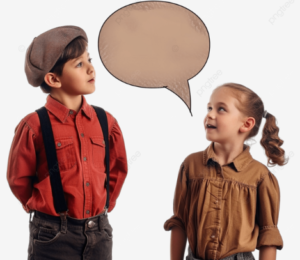
Kids with hearing problems often show clear patterns in how they talk. They often skip soft speech sounds like “s,” “sh,” “f,” “t,” and “k” when they speak. Also, their words might be tougher to grasp, with uneven loudness or odd pitch. Children who can’t hear well may stop babbling or trying new sounds, and it might take longer for them to start talking .
b. Behavioral changes

Kids with hearing problems show behavioral signs in different ways. Research indicates that children who can’t hear well are two times more likely to have behavior issues than kids with normal hearing. What’s more, these problems often stick around even after they get hearing aids, with up to half of these children still showing big behavior problems. Some common signs include getting more frustrated when trying to talk seeming to daydream, and jumping when people appear in their eyesight.
c. School performance issues

Academic performance often shows the effects of hearing problems. Kids with mild to moderate hearing loss end up one to four grade levels behind their classmates who can hear , if they don’t get the right help. What’s more, as children move up in school, the gap in grades between those with and without hearing loss tends to grow. Students might have a hard time with:
- Getting instructions in noisy classrooms
- Keeping up with group talks
- Staying on track with reading and math skills
- Paying attention during class
d. Social interaction problems
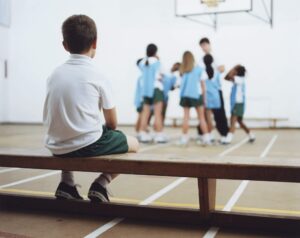
Social development has its own set of hurdles when kids can’t hear well. Studies show that children who struggle to hear often have a harder time than kids with normal hearing. These children tend to feel left out and sad at school if they don’t get to hang out with other kids who also have hearing problems. When they can’t communicate , they might not join in group activities as much or keep up friendships.
2. Age-Specific Warning Signs
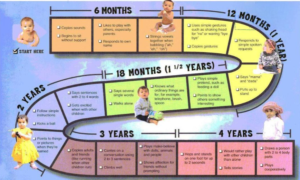
Knowing what to look for at different ages helps parents spot possible hearing issues on. Each stage of a child’s growth comes with its own signs that might mean it’s time to think about hearing aids or see a doctor.
a. Birth to 6 months
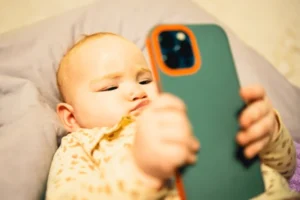
The first few months of a baby’s life provide key opportunities to spot hearing issues. Newborns should jump at loud sounds and move their eyes toward noise sources. At first, babies react more to soft voices than other house noises. Around three months, babies start to coo and respond when they hear voices they know. It’s a red flag if a baby doesn’t jump at loud noises by one month or doesn’t look toward sounds by three to four months.
b. 6 months to 2 years

This time is crucial for hearing and talking growth. At 6 months, babies should know speech sounds and look toward cool noises. Then, from 7 months to 1 year little ones start to get simple words like “Mommy,” “Daddy,” and “no”.
Main growth points include:
- First words show up by 12 months
- Word count grows to 20-50 by 18 months
- Others understand half of what kids say by age 2.5 years
Kids who need hearing checks often talk late or don’t always answer when called. While some kids just grow at their own pace, if a 2-year-old can’t follow easy orders or get basic phrases , it’s time to see an expert.
c. Preschool age

Kids in preschool who might have hearing problems show clear behavior signs. They often feel tired after school because they’ve tried hard to hear what people say. They might also struggle to say what they want. At this age, kids should get possessive words, pick out things by how big they are, and use words for more than one thing and action words.
Checking all newborns has made it easier to spot hearing loss . This finds about 1.7 out of every 1,000 babies tested have hearing problems. But some hearing issues show up later, so it’s key to keep watching. Studies show genes cause 50% to 60% of hearing loss in kids. Germs and things in the world around us lead to about 30% of cases.
3. When to Contact a Professional
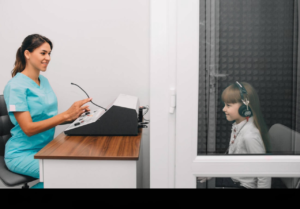
Acting fast can make a big difference if you think your child might have hearing problems. Hearing experts stress that parents should get professional help when they worry about their child’s hearing instead of waiting to see if things get better
a. Finding the right specialist
A pediatric audiologist focuses on checking kids’ hearing using tools and tests made just for young patients. These experts know the special challenges children face and can do thorough hearing checks for different age groups.
Looking for advice starts with your kid’s pediatrician or family doctor, who often acts as the first stop for hearing health care. These doctors can point you toward qualified experts and set up extra referrals if needed, like to ear, nose, and throat doctors or other specialists.
When picking a specialist, think about these important things:
- How close they are and how easy it is to get there for regular check-ups
- How much they know about treating kids
- If they’re part of professional hearing doctor groups
- What your insurance covers and what money options you have
b. Getting ready for the first visit
The first visit lays the groundwork for your child’s hearing care. So, getting ready helps make sure the visit goes well. Before you go, keep a detailed log of your child’s hearing, speech, or communication issues. Note how often they happen and in what situations.
Parents should know that today’s hearing tests don’t hurt and often keep kids interested. The check-up has several parts. These include tympanometry to check how the eardrum moves and different sound recognition tasks done in a special testing room.
First visits often take about 30 minutes, but this can change based on how many tests are needed. During this time, hearing doctors work with families. They make sure everyone understands the test results and what might come next.
To get the most out of the appointment, think about these steps to prepare:
- Plan the appointment when your kid is most awake
- Take along any important health files or past hearing check results
- Note down specific worries and things you’ve noticed about your kid’s hearing
- Think up questions about possible treatments and follow-up care
Many kids adjust to hearing changes without knowing there’s a problem. So, keeping an eye out for warning signs and getting a pro to check can make a big difference in your kid’s growth and how well they do in social situations and at school.
4. Types of Hearing Tests for Children
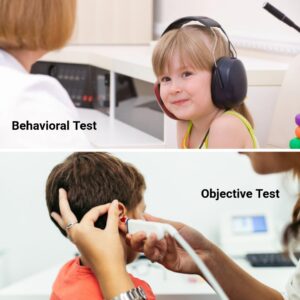
New hearing tests give exact ways to check kids’ hearing skills through different scientific methods. Doctors who specialize in hearing use two different test types to check how well young patients hear.
a. Behavioral hearing tests
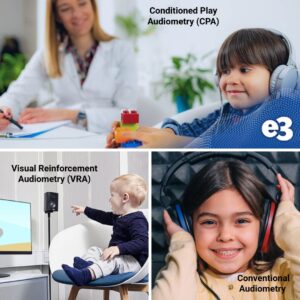
Behavioral tests show how kids react to different sounds. The methods change depending on how old the kids are and how much they’ve grown. Visual Reinforcement Audiometry (VRA) is the go-to method for kids between 6 months and 2.5 years old. This technique teaches kids to look towards where a sound comes from. When they do it right, they get a reward like moving toys or videos.
For kids aged 2 to 5 years hearing experts use Conditioned Play Audiometry (CPA). This method turns the hearing test into a fun game. Kids do simple things like put blocks in a bucket or stick pegs on a board when they hear sounds. This way keeps the kids interested and gives accurate hearing results.
Kids over 5 years old take part in Conventional Audiometry tests. They lift their hands or push buttons when they hear sounds through headphones. This approach helps hearing experts figure out the softest noises a child can pick up across different sound pitches.
b. Objective hearing tests
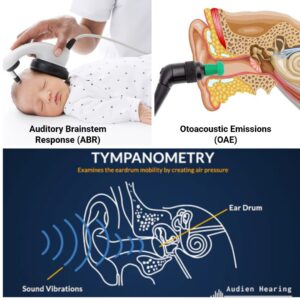
Unlike tests that need kids to do something objective tests check hearing without the child’s help. Otoacoustic Emissions (OAE) testing puts a tiny device in the ear canal. It makes sounds and checks how the inner ear reacts. This test spots possible hearing loss or fluid in the middle ear.
Auditory Brainstem Response (ABR) testing gives another key objective measure. This test records the brain’s response to sounds played through earphones using electrodes on the child’s head. The child must stay still during the test, which often means babies need to sleep or older kids might need sedation.
Audiologists also use Tympanometry to check middle ear function by measuring eardrum movement. This quick test puts a soft tip at the ear canal entrance and changes pressure to check middle ear status. Together, these objective methods give useful insights into a child’s hearing abilities when behavioral testing is tough.
The mix of behavioral and objective tests helps audiologists get a full picture of how well a child hears. Right after these tests are done, doctors can figure out if hearing aids or other treatments might help the child grow and learn better.
5. Starting Out with Hearing Aids
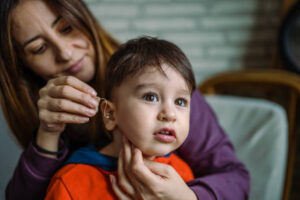
Picking the right hearing aids is a key part of helping your child hear better. The best device, along with good support and time to adjust, can boost how much your child can hear and understand.
a. Kinds of hearing aids for kids
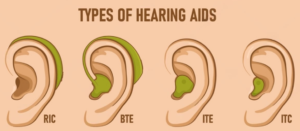
Behind-the-ear (BTE) hearing aids are the top pick for kids. They have a plastic case that sits behind the ear and connects to a custom earmold in the outer ear. BTE aids are tough and easy to adjust as kids get bigger, which makes them great for babies and young children.
Receiver-in-the-ear (RITE) hearing aids work well for older kids and teens. They look like BTE aids, but the speaker goes inside the ear canal, so the case behind the ear can be smaller. These aids come with cool features like Bluetooth, but they’re not as tough as BTE models.
In-the-ear (ITE) hearing aids suit older children best, as their ears have slowed in growth. These devices made to fit, sit inside the ear offering a less noticeable option. Yet, their compact size limits their power and makes them unsuitable to help with severe hearing loss.
b. Insurance and financial support
![]()
All states provide hearing aids for children through Medicaid. Families without good insurance have other ways to get help:
- Programs specific to each state for hearing aids
- Groups that give free or cheaper devices
- Tax write-offs for hearing aid costs
- Payment plans at hearing clinics
c. What to expect during the adjustment period
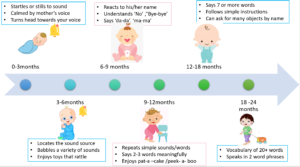
New hearing aid users need about six weeks to get the full benefits from their devices. The first two weeks are key to getting used to them. During this time, kids might notice:
- Their voice sounds different or louder
- They hear more background noises
- Their ear feels a bit itchy or irritated
To help them adjust well, set up a daily routine that includes:
- Putting hearing aids in when the day starts
- Cleaning and taking care of them
- Storing them when not wearing them
Begin by having your child wear the devices in quiet places then move to noisier areas as they get more comfortable. Keep in mind that wearing them all the time is vital for the best adjustment even if they’re not sure about it at first.
Conclusion

Spotting hearing loss signs has an impact on how a child grows. The process might seem tough at first, but knowing the red flags and acting fast can help your child do better.
Parents are key in spotting possible hearing problems first. When you know what to look for at different ages, which tests to use, and what hearing aids are out there, you can make smart choices about your child’s hearing health. Keep in mind that today’s hearing aids work well, but it takes time and help for kids to get used to them.
Money doesn’t have to stop you, as there’s lots of help through insurance, state plans, and charities. Most kids adapt to hearing aids in about six weeks when they get the right support and cheering on.
Your kid’s hearing health has an impact on their social, academic, and emotional growth. Acting fast along with expert help sets up the best base to succeed. If you spot any red flags talked about in this guide, get in touch with a child hearing doctor who can do a special check-up and offer the right fixes for your child’s specific needs.

